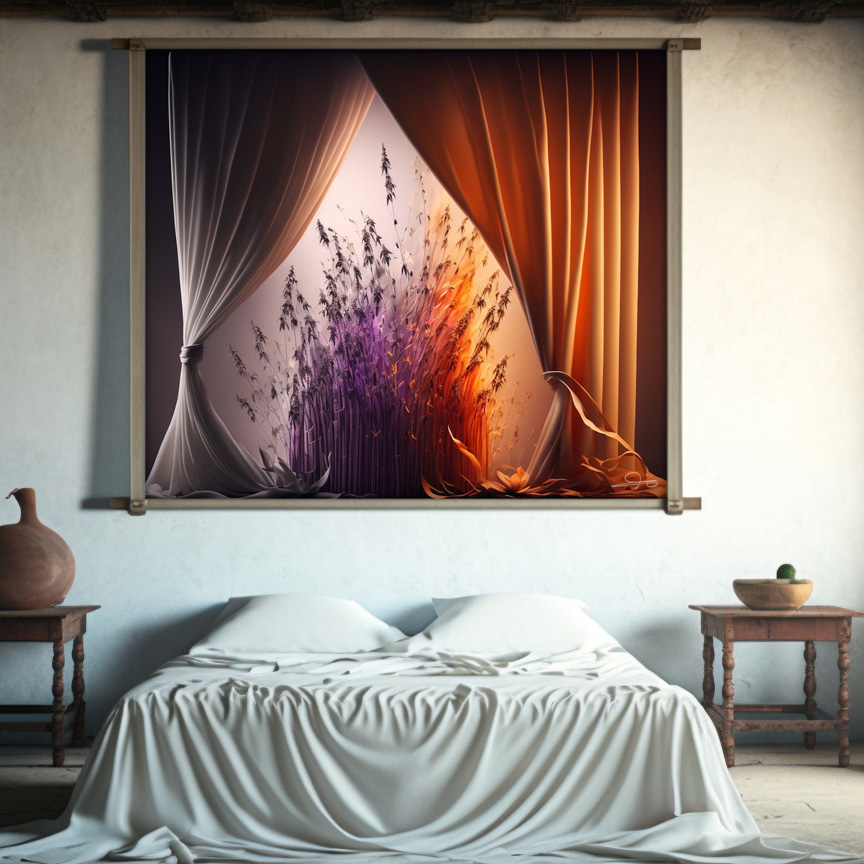
THE REGION
These cities of the Var in Provence are rich in artistic and cultural heritage. Here is a brief overview of the art history of each of these cities:
Aups is home to several art galleries and artists’ studios. The history of art dates back to Antiquity, with remains from Roman times such as the Villa de la Crouzette, which houses remarkable mosaics. The city is also known for its many artists who settled in the region at the end of the 19th century and the beginning of the 20th century, attracted by the beauty of Provence.
Tourtour, also nicknamed the “village in the sky”, has a long artistic history dating back to the Middle Ages. The town was an important center of earthenware production in the 18th century, with many pottery workshops. Today, the city is home to several contemporary art galleries and regularly hosts art exhibitions.
Salernes is best known for its production of ceramic tiles since the Middle Ages. Salernes tiles have been used in many historic buildings in France and Europe. Today, the city is home to several ceramic workshops, as well as art galleries and museums dedicated to ceramics.
Régusse is located in a region rich in archaeological sites, some of which date back to Roman times. The city is also home to several contemporary art galleries, as well as an annual art festival called “Les Arts dans la Rue,” which attracts artists from across the region.
STORY
The Haut-Var region of Provence has a rich and varied history, with prehistoric remains, Roman sites, medieval buildings and hilltop villages.
During prehistoric times, the region was inhabited by groups of nomadic hunter-gatherers. Remains from this era have been found in the area, including flint tools and cave paintings.
During Roman times, the region was crossed by a Roman road which connected the cities of Arles and Fréjus. Remains of this Roman road can still be seen in the region, as well as archaeological sites such as the Roman villa of La Crouzette in Aups.
In the Middle Ages, the region was controlled by local lords who built fortified castles to protect against invasions. Many hilltop villages in the region were also built during this period, including Tourtour, Entrecasteaux and Villecroze.
During the French Revolution, the region was the scene of conflicts between the partisans of the Revolution and the royalists. Several villages were burned or destroyed during this period.
In the 19th century, the region was marked by the arrival of many artists, attracted by the beauty of Provence. These artists have contributed to making the region known nationally and internationally.
Nowadays, the Haut-Var is a popular tourist region, known for its landscapes of hills and mountains, its perched villages, its archaeological sites and its cultural and artistic heritage.


PROVENCE ARTISTS
Paul Cézanne (1839-1906): Born in Aix-en-Provence, Cézanne is one of the region’s most famous artists. He is known for his paintings of Sainte-Victoire Mountain, which he painted many times throughout his career.
Vincent van Gogh (1853-1890): Van Gogh lived in Provence for a period of his life and painted some of his most famous paintings there, including “The Starry Night”.
Auguste Renoir (1841-1919): Renoir spent several summers in Cagnes-sur-Mer, where he painted numerous paintings of landscapes and scenes of daily life.
Henri Matisse (1869-1954): Matisse spent part of his life in Saint-Tropez, in the Haut-Var, and painted several paintings there, notably “Interieur au violon” and “La Danse”.
Bernard Buffet (1928-1999), a French figurative painter, lived in the village of Tourtour and painted several paintings there.
Jean Deyrolle (1911-1967): Born in Tourtour, this artist spent most of his life in Haut-Var. He painted many paintings of the region, including landscapes, scenes of daily life and portraits.
Gustave Courbet (1819-1877): Courbet spent part of his life in Saint-Antonin-du-Var, in Haut-Var. He painted several paintings there, notably “Le Château de Saint-Antonin” and “Le Moulin de la Galette à Saint-Antonin”.
